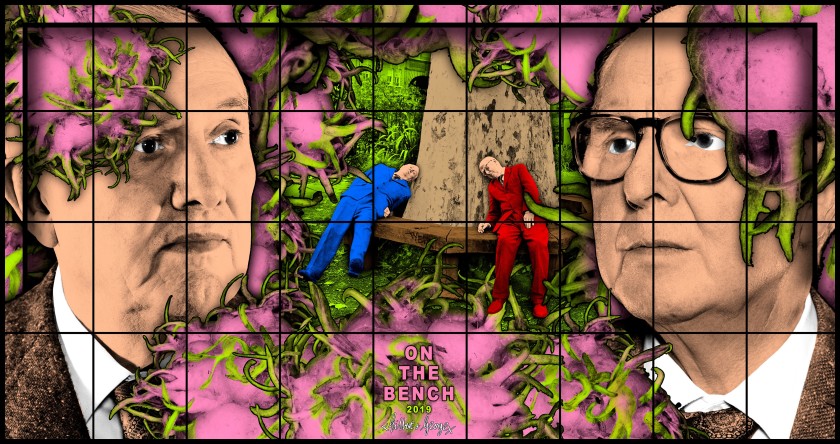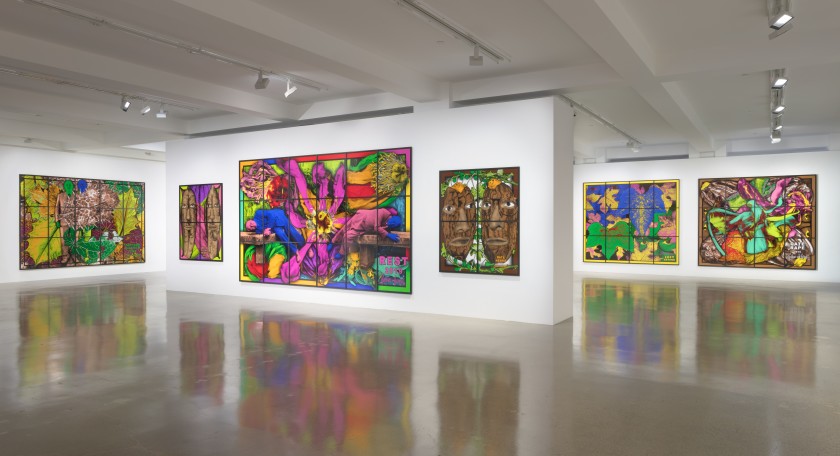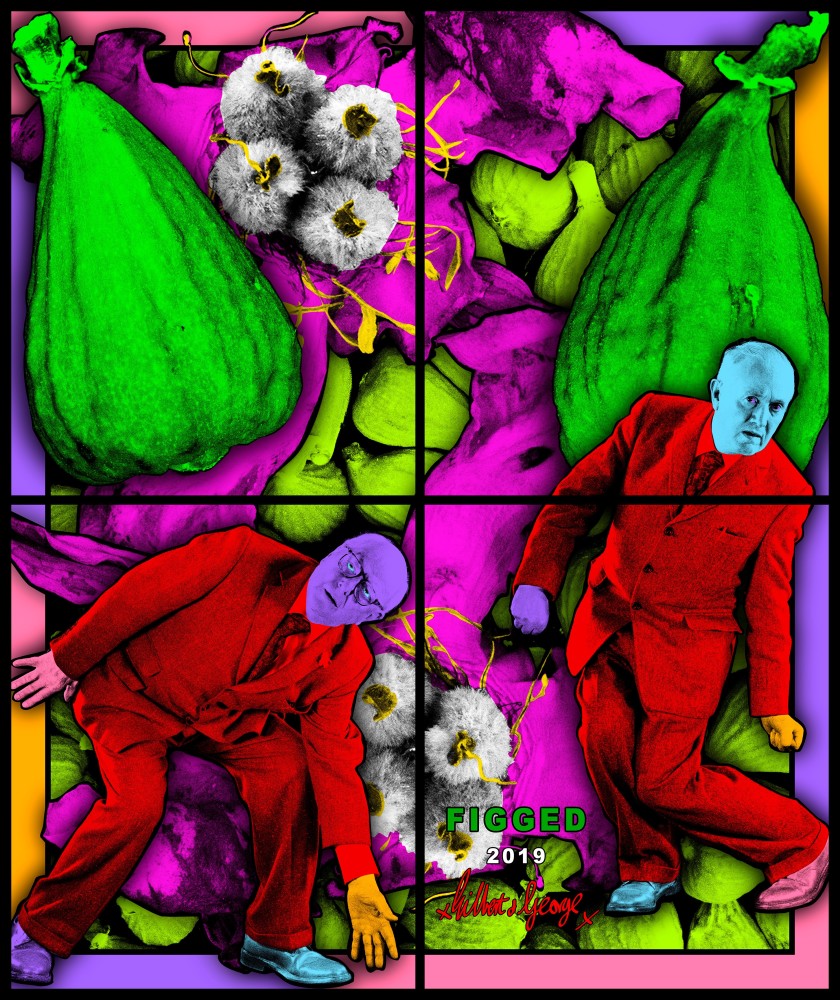The British duo, Gilbert & George now in their 70s, have been collaborating since the late 1960s. They have worked together for more than 50 years, creating at first performance-based works (they declared themselves “living sculptures”) and later large-scale drawings and multi-panel photographs. Gilbert & George’s approach to art and art-making has always been inclusive as they believed that any and everything is apt subject matter for their explorations. They are not shy about using their artworks as a means for expressing their opinions about art, sex, religion, social taboos, and current politics. Throughout their career, they have not only worked together but present themselves as dapper dressers who never let down their guard. In essence, they are the artwork, though they claim not to be performing as they go about their lives in public. Gilbert & George remain a unique presence and are remarkable artists who continue to grow and surprise with each new series of work.

Gilbert & George, “On the Bench,” (2019). Image courtesy of Gilbert & George/ Sprüth Magers
Without a doubt, Gilbert & George are masters of their medium and have a unique way of compositing images. Each piece is a wall-sized photograph comprised of individual segments surrounded by black frames that are arranged in a large grid. Gilbert & George have devised a system for producing, shipping and showing their photographic pieces whereby the works are conceived as fragments or sections that cohere into the final image when it is installed on the wall. While early on, their pieces were black and white, they have enthusiastically embraced color to make pieces that incorporate the full-color spectrum in both realistic as well as fantastical ways. It goes without saying that Gilbert & George are prolific. Their current works are over the top, confrontational and thoroughly enjoyable. It is not unusual to walk into a Gilbert & George exhibition and be bombarded by huge colorful photographic grids that span the gallery walls. This is indeed the case in The Paradisical Pictures, their first Los Angeles solo exhibition in nearly twenty years. For The Paradisical Pictures, Gilbert & George have created thirty-five new works.

Gilbert & George, “Magnolia Heads,” (2019). Image courtesy of Gilbert & George/Sprüth Magers.
The new works take the idea of “paradise” as a point of departure. The compositions are filled with colorized black and white photographic images that become lush gardens, ripe or rotting fruit, and vibrantly colored leaves. Gilbert & George appear in these pictures dressed in their signature suits, but also as fragmented body parts— lips, eyes, heads. In On the Bench (all works 2019) colorized photographs of Gilbert & George are posed leaning against a wooden bench surrounding a large tree. This central image is encircled by larger than life pink flowers with neon green tendrils. On the left and right sides of the composition are portraits of Gilbert & George cropped at the chest, their enlarged heads gaze out of the frame, across each other and into the distance. Left Behind is a more abstract work. Here, their cropped and brightly colored heads— blue for Gilbert, green for George— peer out from behind a collage of high contrast, over-saturated maple leaves. While Gilbert & George’s skin-color matches the over-saturated leaves, their red and yellow eyes pop.

Installation view of the Gilbert & George show “The Paradisical Pictures.” Image courtesy of Sprüth Magers.
Gilbert & George’s work is infused with humor and self-parody. With an unabashed sexually explicit and confrontational style, The Paradisical Pictures are more suggestive than bombastic. Curl for example, is a montage that features the artist’s eyes amongst a swirl of curled leaves that allude to abstracted mask-like faces. Chains depicts Gilbert & George with composited heads and bodies outlined by chains. The background of the image is again a melange of over-saturated fall leaves. Clearly Gilbert & George are no longer young men and in these new works, they contrast the beautiful aspects of nature with its (and their own) eventual decay. Their acid palette and heightened color scheme suggests violence and unease as nature encroaches and leaves its mark on the body. Gilbert & George remain stoic as they compete with these overgrown plants that often overtake the picture plane and relegate them to the shadows, or presented as fragments. But even from the depths, obscured by unnatural colors, Gilbert & George take charge, refusing to be consumed by this deranged image of paradise.
Gilbert & George
The Paradisical Pictures
Sprüth Magers
November 16, 2019 – January 25, 2020

